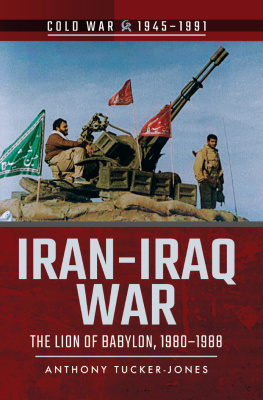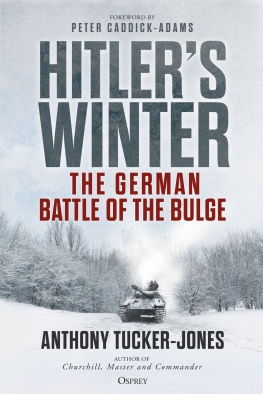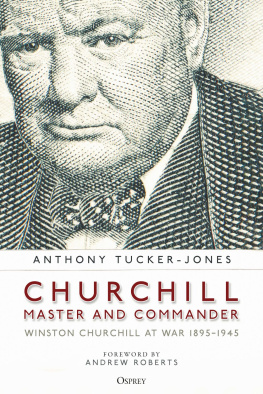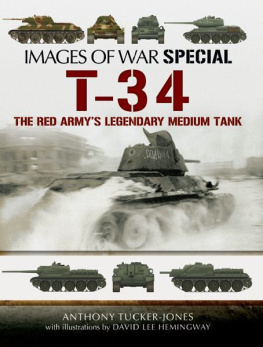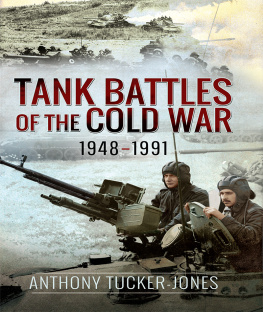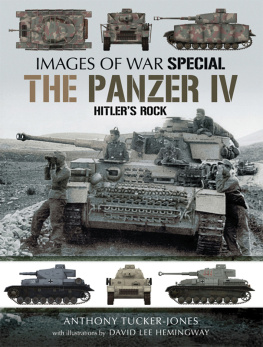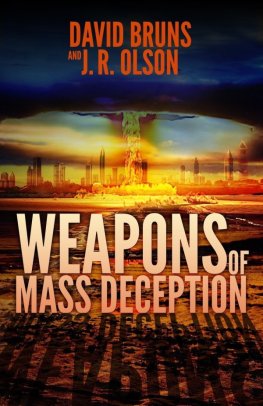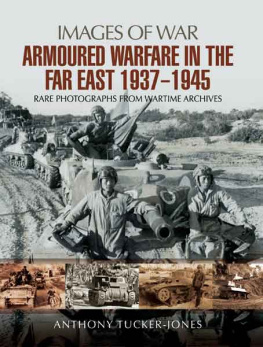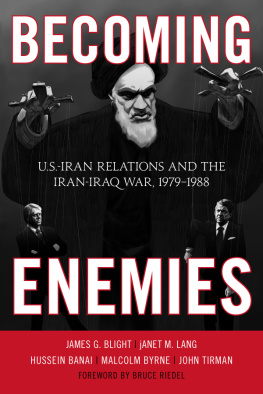Pagebreaks of the print version

IRANIRAQ WAR
THE LION OF BABYLON 19801988
ANTHONY TUCKER-JONES
First published in Great Britain in 2018 by
PEN AND SWORD MILITARY
an imprintof
Pen and Sword Books Ltd
47 Church Street
Barnsley
South Yorkshire S70 2AS
Copyright Anthony Tucker-Jones, 2018
ISBN 978 1 526728 57 9
eISBN 978 1 526728 58 6
Mobi ISBN 978 1 526728 59 3
The right of Anthony Tucker-Jones to be identified as the author of this work has been asserted in accordance with the Copyright, Designs and Patents Act 1988.
A CIP record for this book is available from the British Library All rights reserved. No part of this book may be reproduced or transmitted in any form or by any means, electronic or mechanical including photocopying, recording or by any information storage and retrieval system, without permission from the Publisher in writing.
Every reasonable effort has been made to trace copyright holders of material reproduced in this book, but if any have been inadvertently overlooked the publishers will be pleased to hear from them.
Pen & Sword Books Ltd incorporates the imprints of Pen & Sword Archaeology, Atlas, Aviation, Battleground, Discovery, Family History, History, Maritime, Military, Naval, Politics, Railways, Select, Social History, Transport, True Crime, Claymore Press, Frontline Books, Leo Cooper, Praetorian Press, Remember When, Seaforth Publishing and Wharncliffe.
For a complete list of Pen and Sword titles please contact
Pen and Sword Books Limited
47 Church Street, Barnsley, South Yorkshire, S70 2AS, England
email:
website: www.pen-and-sword.co.uk
LIST OF MAPS IN THE COLOUR PLATES
Map 1: The war zone
Map 2: The war, September 1980 to April 1982
Map 3: The Soviet threat
Map 4: Operation Val Fajr 8
Map 5: The Fao Peninsula
Map 6: Operation Karbala 5
Map 7: Operations Val Fajr 8 and Karbala 5 and
Map 8: Operations Karbala 5 and
Map 9: Range of Iraqi airstrikes
Map 10: The Tanker War
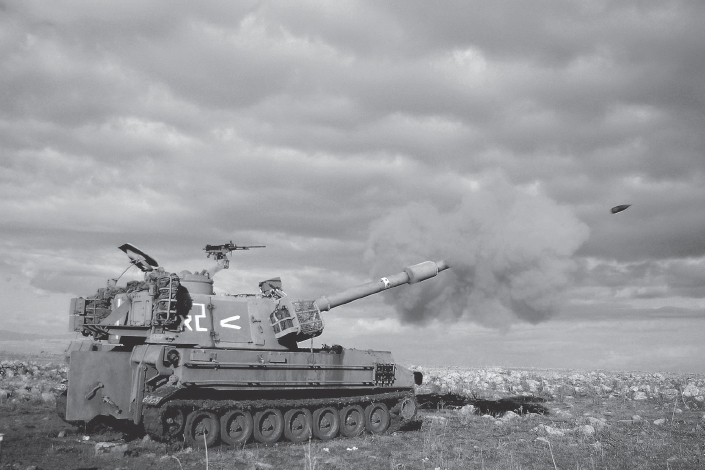
As the war progressed Irans U.S.-supplied weaponry, such as its M109s, became increasingly hampered by a lack of spares. (IDF)
INTRODUCTION: CHOKING WHITE VAPOUR
The survivors recalled hearing the distant roar before they saw the Iraqi jets come skimming low up the valley. The aircraft shot over the town of Halabja jerking skyward before releasing the metal burdens from their wing pylons. People fled as the first muffled explosions vibrated the ground. Those nearest fell dead instantly. There were three waves that afternoon and three the next day.
Soon the stench was appalling, as were the clouds of flies congregating over the slumped corpses. They had fallen where they stood, in their homes, in doorways and in the road, men, women and children. Death had been indiscriminate. The carnage was like a scene from the First World War, but the tell-tale broad pantaloons and droopy moustaches of the men showed them to be Kurds. The world was outraged but did nothing.
It was during the closing stages of the Iran-Iraq War in 1988 that Saddam Husseins air force unleashed its death-dealing chemical arsenal on Halabja gassing 12,000 helpless Kurdish civilians. Saddam had invaded neighbouring Iran but failing to achieve a swift victory spent the next eight years using his superior military firepower and chemical weapons to fend off Irans seemingly overwhelming forces. The end result was that the two countries fought each other to a bloody standstillthe Kurds dreaming of independence were caught in the crossfire. Halabja became one of the terrible defining moments of the conflict. By the time the war finished Saddam had become a self-styled absolute rulerthe Lion of Babylon who showed no mercy to his enemies.
Saddam Hussein naively assumed the overthrow of the Shah of Iran by Ayatollah Khomeini in 1979 had weakened the Iranian armed forces will to fight. The Iran-Iraq War opened on 22 September 1980 with a three-pronged Iraqi armoured assault. In the south Saddams mechanized columns charged into the disputed Iranian province of Khuzestan and in the centre they occupied a strip of territory from Mehran north to Qasr-e-Shirin. Later a far northern front was opened opposite Sulaymaniyah in contested Kurdistan.
There were three distinct phases to the war: Saddams invasion, which ground to a halt by mid-November 1980, the stalemate that lasted until May 1981 and the Iranian counteroffensives that commenced from then and continued on and off until 1988. Despite the best guns money could buy, Saddam remained firmly on the defensive. Manpower was his Achilles heel and this cost him the initiative.
Officially the Superpowers stood by on the side-lines, but, thanks to the Cold War, indulged in the most appalling hypocrisy. Publicly they declared neutrality but behind the scenes poured billions of dollars of weapons into the region, fuelling the fighting even further. In doing so they sowed the seeds for a much later tragedy that led to the rise of Islamic State.

Iraq ended up using its artillery to help keep Irans massed human-wave attacks at bay. (Authors Collection)
See authors Daesh: Islamic States Holy War also published by Pen & Sword.
1. SHORES OF THE ARABS
The ongoing row with Tehran over control of the Shatt al-Arab Waterway and Irans Islamic Revolution in 1979 convinced Saddam Hussein that the time was ripe to act against his neighbour. The 200-kilometre-long Shatt al-Arab (literally Shores of the Arabs or Arvand Rud , Swift River in Iranian) is the confluence of the Euphrates and Tigris rivers before they empty into the Gulf. It is wide and navigable and upon its western banks lay the vital Iraqi port of Basra.
Following the 1937 border agreement (designating the low-water mark on Irans eastern bank as the frontier), Iraq gained control over the waterway, with the exception of the areas around the Iranian ports of Abadan and Khorramshahr (where the frontier was designated at the deep waterline). Vessels plying the waterway were obliged to employ Iraqi pilots and fly the Iraqi flag (again with the exception for the three Iranian ports). This essentially meant that the Iranian navy stationed in the Shatt al-Arab was reliant on Iraqi goodwill for an outlet to the Gulf. Such an arrangement was clearly going to lead to trouble, despite Iran having a Gulf coast stretching for almost 900 kilometres with several major ports.
In contrast, Iraqs naval aspirations were constrained by the size of its coastline beyond the Shatt al-Arab. Running west Iraq has just twenty-six kilometres of coast, compared to tiny neighbouring Kuwait with 180 kilometres, plus the strategic islands of Warbah and Bubiyan that dominate the estuary leading to the Iraqi port of Umm Qasr, and a large natural harbour north of Kuwait City. Again this situation was a source of constant friction.
In 1961, with Kuwaiti independence, it took the deployment of British troops to head off threatened annexation by Iraq. Although Baghdad had recognized the boundaries of Kuwait under the Treaty of 1913, Iraqs strategic requirement for establishing an effective navy could only be met by possession of Bubiyan and Warbah islands, as well as some joint territory including the valuable southern Rumaila oilfields.

